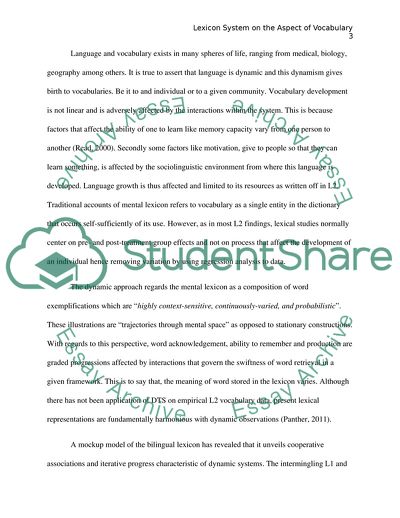Cite this document
(Lexicon System on the Aspect of Vocabulary Article Example | Topics and Well Written Essays - 2250 words - 1, n.d.)
Lexicon System on the Aspect of Vocabulary Article Example | Topics and Well Written Essays - 2250 words - 1. https://studentshare.org/humanitarian/1855898-survey-article-lexical-system
Lexicon System on the Aspect of Vocabulary Article Example | Topics and Well Written Essays - 2250 words - 1. https://studentshare.org/humanitarian/1855898-survey-article-lexical-system
(Lexicon System on the Aspect of Vocabulary Article Example | Topics and Well Written Essays - 2250 Words - 1)
Lexicon System on the Aspect of Vocabulary Article Example | Topics and Well Written Essays - 2250 Words - 1. https://studentshare.org/humanitarian/1855898-survey-article-lexical-system.
Lexicon System on the Aspect of Vocabulary Article Example | Topics and Well Written Essays - 2250 Words - 1. https://studentshare.org/humanitarian/1855898-survey-article-lexical-system.
“Lexicon System on the Aspect of Vocabulary Article Example | Topics and Well Written Essays - 2250 Words - 1”. https://studentshare.org/humanitarian/1855898-survey-article-lexical-system.


